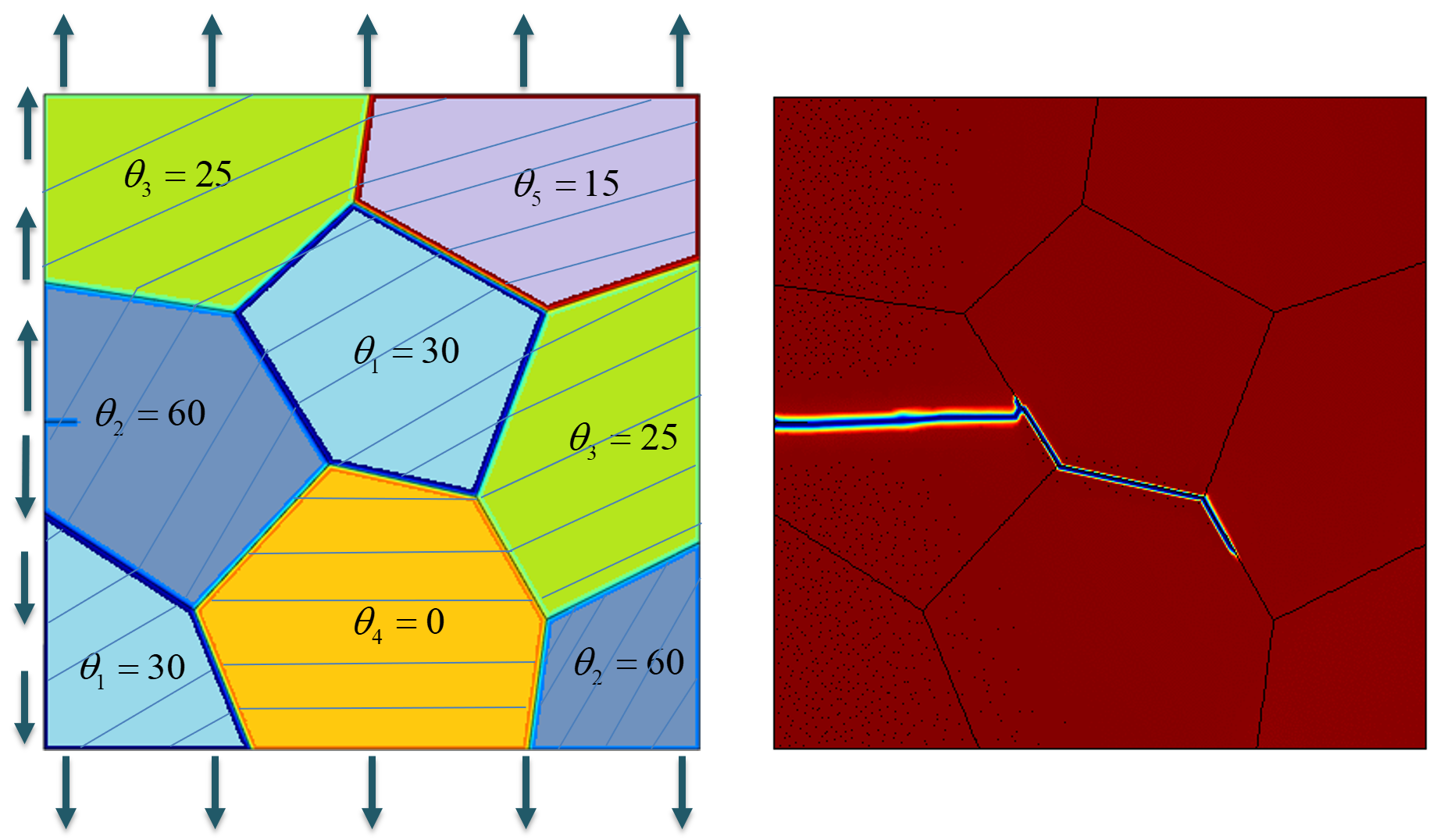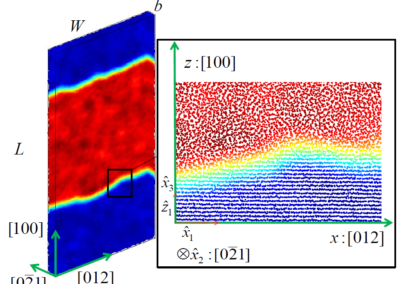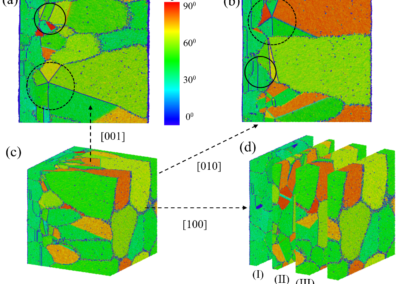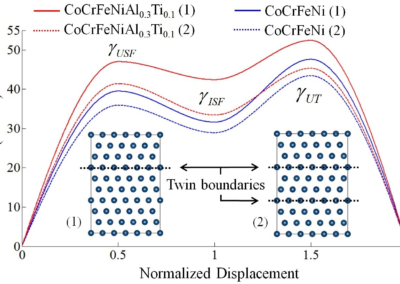Research
Our research lab is focused on studying the nucleation and evolution mechanisms of different type of defects and predicting nano and microstructures of materials that develop during different material processing techniques. Our special interest is to create advanced multi-scale computational models that enable study of materials at different length and time scales to find the processing-structure-property relations. We create large scale parallel simulation environments utilizing supercomputers that allow simulations with multi-thousand CPUs and GPUs (petascale and exascale computing). To calibrate, parametrize and validate our modeling efforts, we employ machine-learning and data analysis algorithms alongside experimental techniques, such as optical microscope, scanning electron microscope (SEM-orientation image mapping) and transmission electron microscope (TEM).
Solidification Nano/Microstructure of Metallic Alloys
Solidification occurs in several manufacturing processes, such as in casting, welding, and laser additive manufacturing of metals. The nano and microstructures that develop during solidification determine the mechanical and other properties of alloys. Recent advancements in computational modeling techniques have made it possible to more effectively study atomistic and microscale mechanisms that control the solidification nano-and microstructures, and formation and evolution of solidification defects. In CMML, we work on developing atomistic and mesoscale models to determine solid-liquid interface properties, study homogeneous and heterogeneous nucleation mechanisms during solidification, and predict solidification nano and microstructures of multi-component (High Entropy Alloys) and multi-phase metallic alloys. For atomistic simulations, we develop second nearest neighbor (2NN) modified embedded atom method (MEAM) potentials that can predict the properties of metals and alloys from the room temperature to their melting points. For predicting nano and microstructures of solidification we work on developing atomistic informed 2D and 3D phase-field models. Our projects are currently funded by NSF and NASA.
Development of Interatomic Potentials Enabling Large Scale Molecular Dynamics Simulations
We have created a semi-automatic platform for development of second-nearest neighbor modified embedded atom method (2NN-MEAM) potentials for metals, alloys, and oxides. The semi-empirical 2NN-MEAM potentials are believed to be the best in terms of accuracy and efficiency for metallic alloys. We utilize the available experimental data and/or perform DFT and AIMD simulations to create low and high temperature data sets for developing 2NN-MEAM potentials, and our potentials are usable from 0K to the melting point of the material enabling large scale MD simulations of solidification, soild state phase transformation, deformation, and failure mechanisms at nanosecond. We continuously work on advancing this framework in order to develop transferable inter atomic potentials for different material systems in order to enable study and design materials at the nanoscale.
Rapid Solidification in Additive Manufacturing
Additive manufacturing (AM) has become the front-runner among the manufacturing processes because of its unique advantages. However, predicting processing-structure-property relationships in AM are quiet challenging due to rapid melting and rapid cooling causing far from equilibrium states. In CMML, we utilize our advanced computational modeling tools to not only predict the nano/microstrcutures that develop in rapid melting and cooling, but also predict the mechanical properties of additive manufactured metals and alloys. We are able to preform multi-million to billion atom MD simulations in order to simulate domains from tens to hundreds of nano-meters. We also have created multiphase-field models coupled with fluid flow that can simulate the effect of melt flow on nano/microstructures of rapid solidification. In addition we employ our advanced computational modeling tool to design alloys suitable for additive manufacturing by predicting possibly formation of intrinsic and extrinsic defects in AM.
Solid State Microstructural Evolution
Phase transformation, precipitation, recrystallization and grain growth are of great importance in controlling or enhancing the mechanical or other properties (e.g., corrosion) of materials. These phenomena occur at temperatures lower than the melting point and can significantly affect the properties of materials. In CMML, we work on developing atomistic and phase-field models to predict solid state microstructural evolution of metallic alloys; examples includes phase transformation in zirconia, grain growth in metals, and formation and evolution of precipitates. Our projects are currently funded by NSF, DOE and ACS.
Martensitic Phase Transformation and Functional Materials
Martensitic phase transformation is a coordinated diffusionless phase transformation observed in several metallic alloys (e.g., steels and superalloys) and ceramics (e.g., functional oxides). In different materials, martensitic phase transformation can be activated by different stimuli (e.g., thermal, mechanical, thermo-mechanical, electrical, magnetic fields). Shape memory, superelastic, ferroelectric and piezoelectric properties of different functional materials are governed through martensitic phase transformation. In CMML, we work on developing and implementing multiscale integrated models, ranging from electronic to macro scales to study and design functional materials.
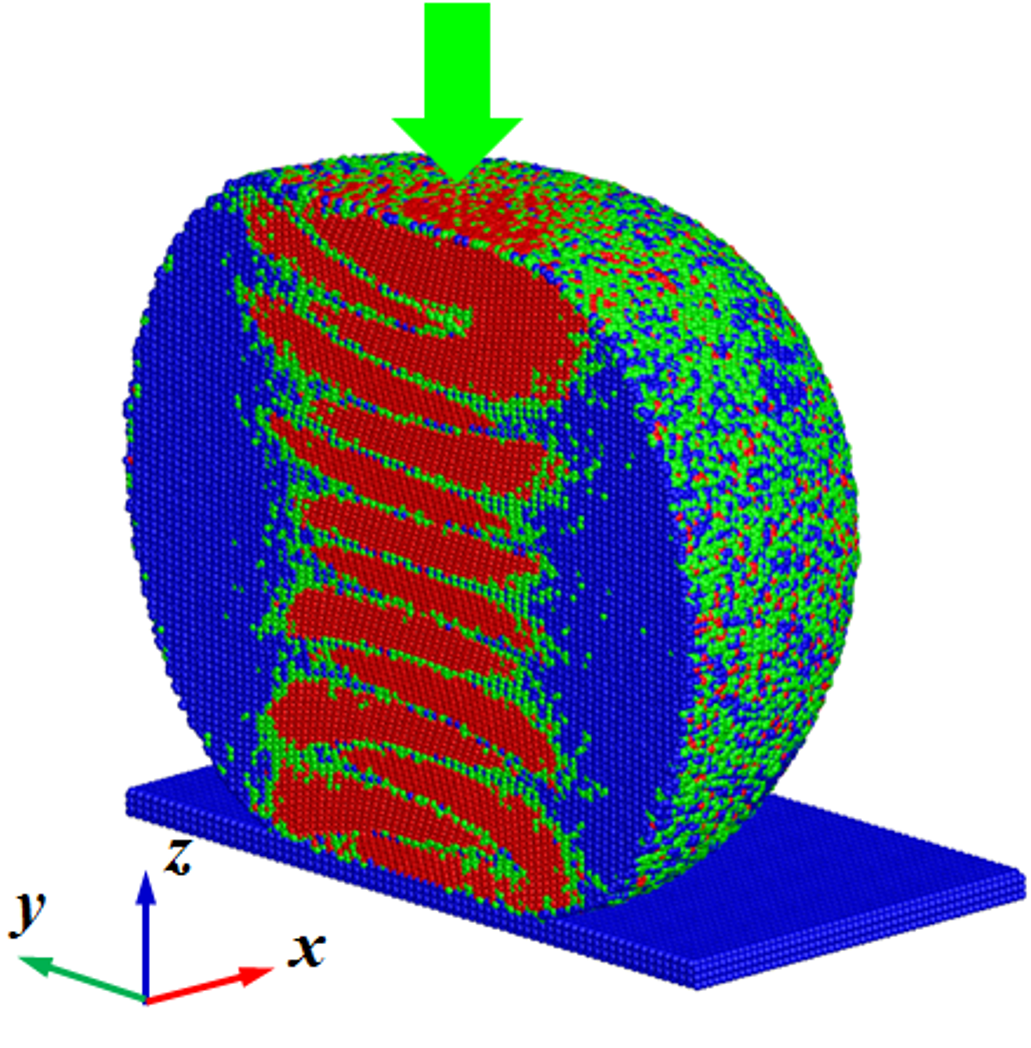
Deformation and Failure Mechanisms
Predicting deformation and failure mechanisms of materials are of critical importance for manufacturability and structural integrity. Ductility, elongation to break, crack propagation, fracture, and fatigue failure are interconnected characteristics of materials controlled by composition and nano/micro structural features of materials. In CMML, we develop and implement advanced multi-scale computational models to predict deformation mechanisms, fracture and failure behaviors of different material system. Our projects are currently funded by NSF and DOE. In separate projects, we are currently working on understanding of intrinsic and extrinsic defects on deformation and failure of shape memory ceramics, 2D MXenes, high entropy alloys, and 7000 Al alloys.
Nanoscale Deformation and Fracture
We recently introduced a procedure to determine the generalized stacking fault energy curves for high entropy alloys by DFT calculations. Our uncertainty quantifications demonstrated the accuracy of our procedure. With such calculations, one can predict ductility and the deformation mechanisms for such complex alloys. At larger length scales, we have created atomistic models enabling study of deformation and failure of nano-particles and nano-pillars.
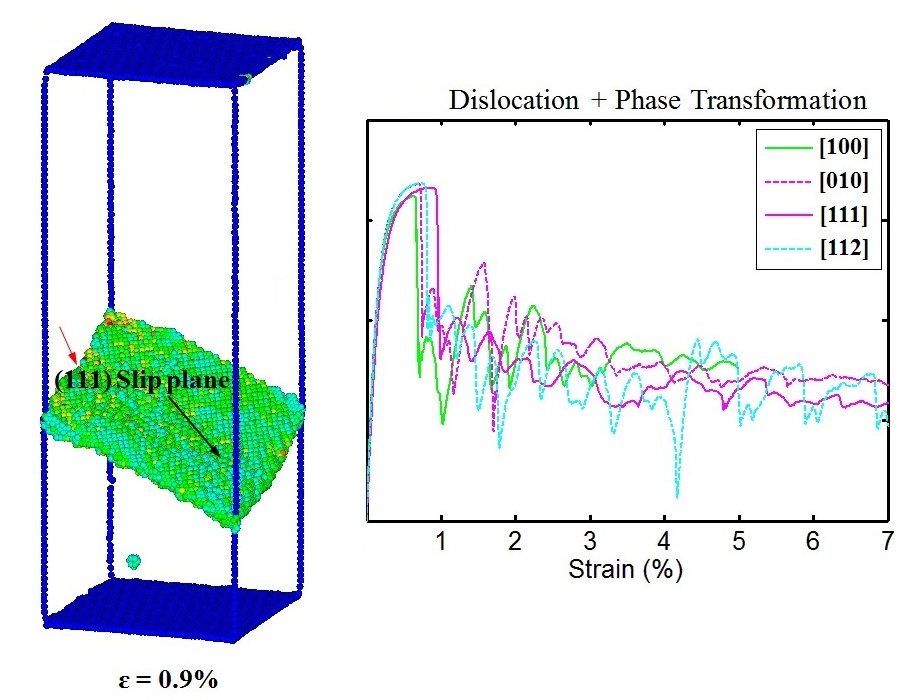
Microscale Deformation and Fracture
In microscale, we have recently developed a quantitative phase-field model for crack propagation in multiphase and composites materials. This modified phase-field model considers the actual mechanical properties (e.g., strength) of different phases in the system. This model was benchmarked against the classical linear elastic fracture mechanics as well as experiments for different materials. This model is capable of predicting both crack propagation path and force-displacement response comparable to experiments. We are currently extending this model to polycrystalline materials in order to design microarchitectures maximizing the fracture toughness. We are also working on coupling phase-field modeling and extended finite element method (XFEM) to predict fatigue failure at larger length scales.
